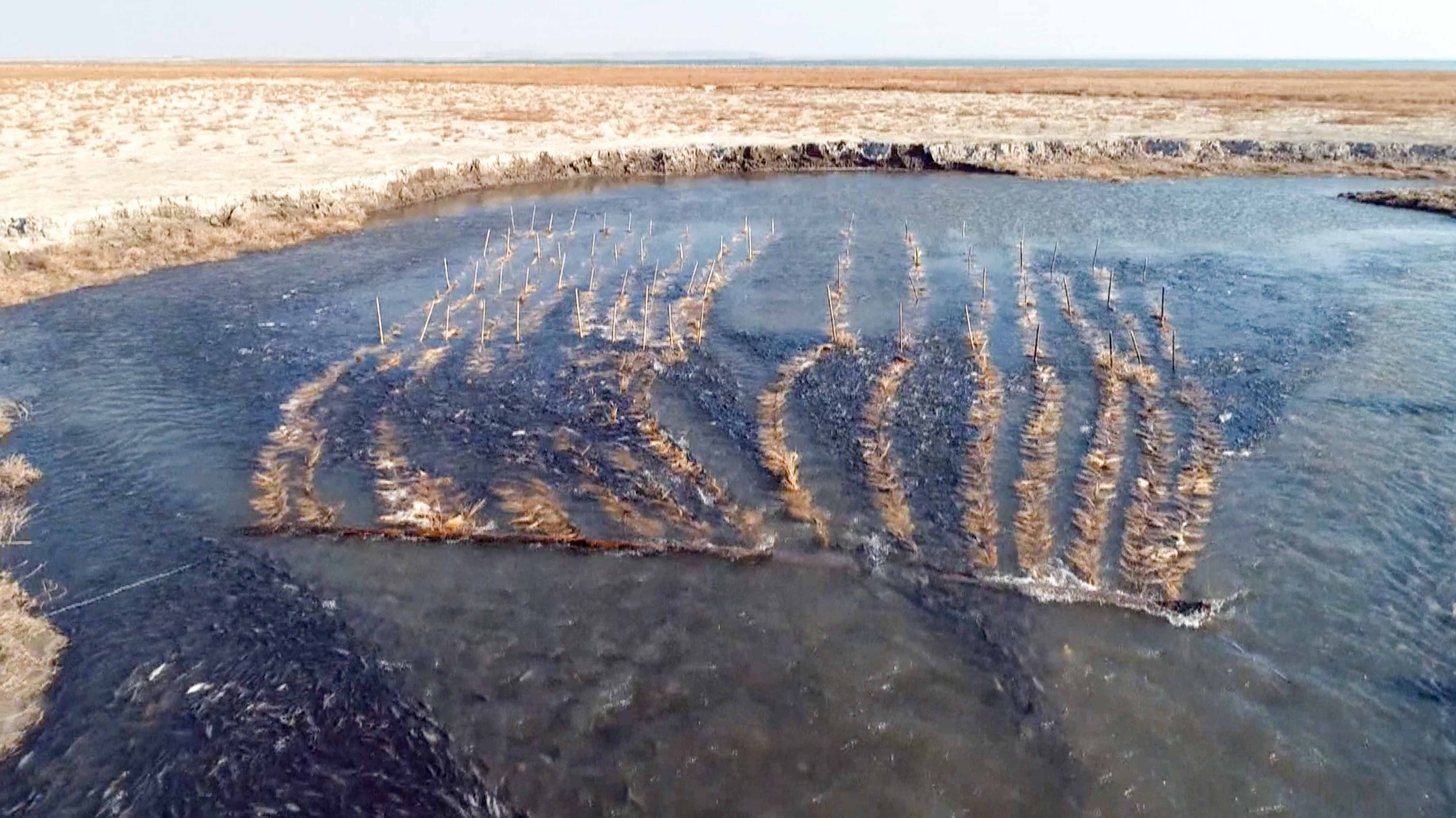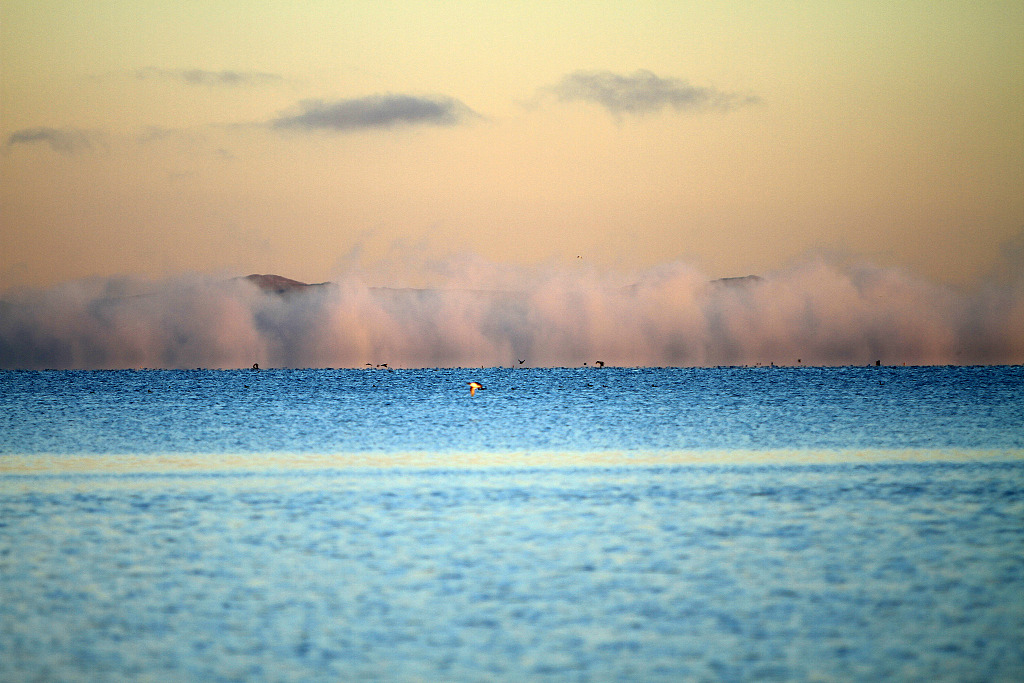
Animal
14:26, 13-May-2019
Millions of fish migrate upstream to spawn in north China
CGTN
00:59

Millions of amur ides are migrating upstream to reach Dali Lake for spawning.
Dali Lake or Dalinur Lake is the second largest lake in north China's Inner Mongolia Autonomous Region. Every year, amur ides swim to warm freshwater rivers from Dali Lake to reproduce.
Because the water salinity is five percent, amur ide and crucian carp are the only species of fish that inhabit the lake. They are the main food source for birds including fish gulls, herons, and cormorants.

Sunset view of Dali Lake. /VCG Photo
Sunset view of Dali Lake. /VCG Photo
The fish migration is slightly late this year. “Since their migration period is relatively short, the number of fish in the river this year is more than in previous years," said Sun Lixiao, deputy chief of the production technology section of a local fishery.
The birds eat about 1,500 tons of amur ide every year. In the migration period, the birds can get the fish with no effort.
However, rising salinity of the lake, bird predation, overfishing, and climate change all pose a threat to the fish population. In order to maintain the balance of the biological chain, local fisheries have carried out propagation.
"We have laid nearly 3,000 bales of artificial fish nests. Most spawns have been transferred to our hatching pond for hatching," said Liu Yuhai, chief of the production technology section of a local fishery.
After years of efforts, the survival rate of fish spawns has increased from 10 percent to 40 percent.
(Cover image via screenshot)
(If you want to contribute and have specific expertise, please contact us at nature@cgtn.com.)

SITEMAP
Copyright © 2018 CGTN. Beijing ICP prepared NO.16065310-3
Copyright © 2018 CGTN. Beijing ICP prepared NO.16065310-3